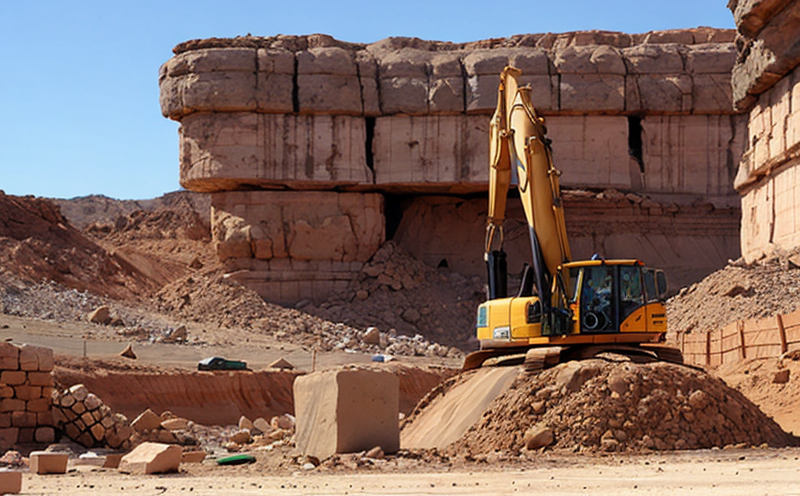ISRM Suggested Method for Fracture Toughness Testing of Rock
The ISRM (International Society for Rock Mechanics) suggested method for fracture toughness testing is a comprehensive approach designed to evaluate the resistance of rock materials to crack propagation under dynamic loading conditions. This test is particularly valuable in mining and geotechnical engineering, where understanding how rocks behave under stress can help predict their performance in various applications.
The ISRM method focuses on quantifying the energy required for a propagating crack to advance through a material. This parameter, known as fracture toughness (KIC), is crucial for assessing rock integrity and durability. In mining operations, knowing the fracture toughness of rocks can inform critical decisions such as selecting appropriate extraction methods, designing support structures, and predicting potential failure points.
The testing process involves carefully preparing a specimen from the rock material to be tested. The specimen should have a specific geometry that allows for accurate measurement of crack propagation. Once prepared, it is placed in a testing machine capable of applying controlled dynamic loads. The test setup typically includes an impact hammer or a drop-weight machine that delivers energy to initiate and propagate cracks within the specimen.
The ISRM method specifies detailed procedures for conducting these tests. It emphasizes the importance of maintaining standard conditions throughout the experiment, including temperature control, specimen orientation, and loading rate. Compliance with these standards ensures accurate and reproducible results, which are essential for reliable assessment of rock properties.
Understanding fracture toughness is vital in mining operations because it helps engineers anticipate how rocks will behave under stress. For instance, knowing the fracture toughness of a particular rock type can guide decisions on whether to use blast-resistant supports or other safety measures during excavation. Additionally, this information can influence the choice of drilling methods and blasting techniques that minimize damage to surrounding structures.
The ISRM method also provides criteria for interpreting test results. These criteria are based on international standards such as ISO 14623:2007, which outlines procedures for determining fracture toughness using dynamic testing methods. By adhering to these standards, laboratories ensure that their findings are consistent with those from other reputable institutions, enhancing the credibility of their reports.
In summary, the ISRM suggested method for fracture toughness testing is an essential tool in mining and geotechnical engineering. It provides insights into rock behavior under stress, enabling more informed decision-making processes in various aspects of mining operations. The accuracy and reliability of these tests contribute significantly to ensuring safety and efficiency in mining activities.
Benefits
- Accurate assessment of rock integrity and durability.
- Prediction of potential failure points, enhancing safety measures.
- Informed selection of appropriate extraction methods and support structures.
- Enhanced understanding of rock behavior under stress for optimal design.
- Compliance with international standards ensuring consistent results.
Why Choose This Test
- The ISRM method is internationally recognized and widely accepted in the mining industry.
- It provides precise data that can be used for critical decision-making processes.
- The test setup ensures reproducibility, leading to more reliable results.
- Compliance with ISO standards enhances the credibility of laboratory reports.
- It offers a standardized approach that is consistent across different testing facilities.
Competitive Advantage and Market Impact
The ISRM suggested method for fracture toughness testing provides significant competitive advantages in the mining sector. By offering accurate and reliable data on rock properties, it enables companies to make informed decisions that enhance operational efficiency and safety. This information can lead to better planning of extraction processes, improved design of support structures, and reduced risks associated with rock failure.
In terms of market impact, the use of this testing method sets a benchmark for quality in mining operations. Companies that adopt these standards demonstrate their commitment to excellence and compliance with international best practices. This can attract clients who prioritize safety and reliability in their business dealings, thereby enhancing brand reputation and market position.
The accuracy and consistency provided by ISRM tests also contribute to the overall competitiveness of the industry. By setting a high standard for testing methodologies, these methods encourage innovation and continuous improvement in mining technologies. This environment fosters a culture of excellence that benefits all stakeholders involved in the sector.





